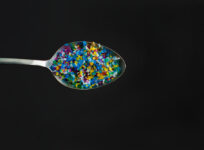Is Diabetes an Environmental Illness?
PORTLAND, OR—Few people think of type 2 diabetes as being an “environmental” disease. But new data, recently published in prominent diabetes journals, point to an etiologic connection between exposure to “persistent organic pollutants (POPs)” and risk of diabetes, said John Peterson “Pete” Myers, at the annual meeting of the American Holistic Medical Association.







